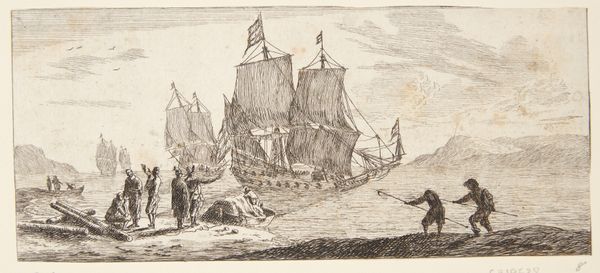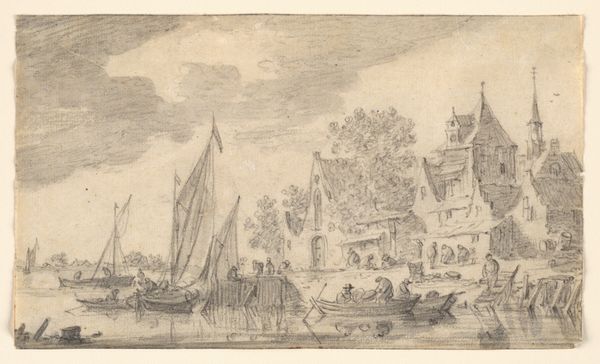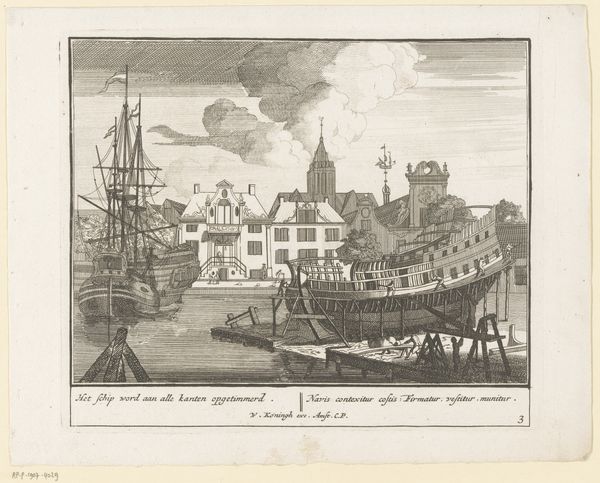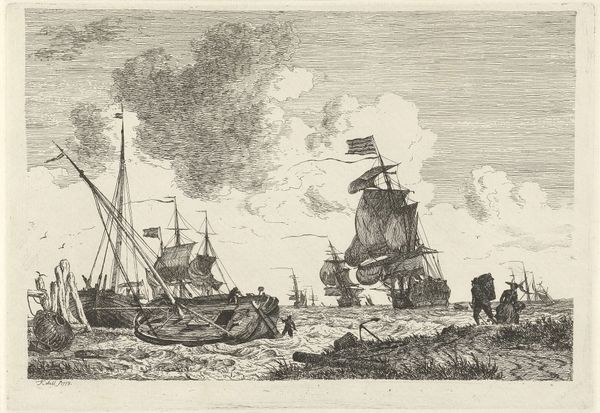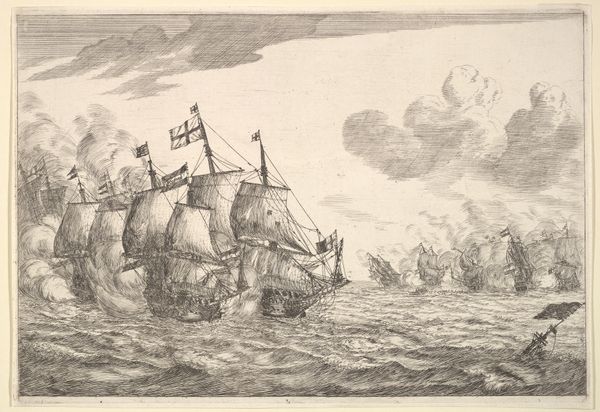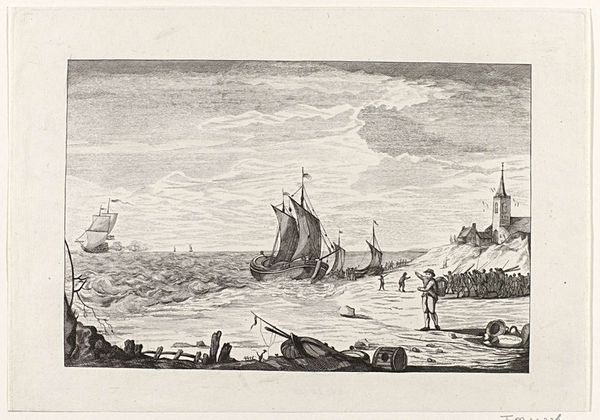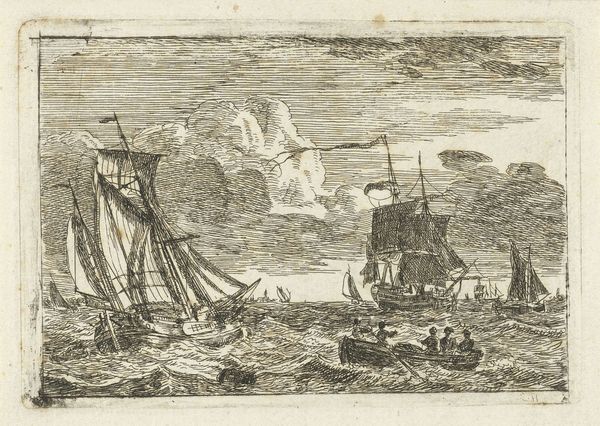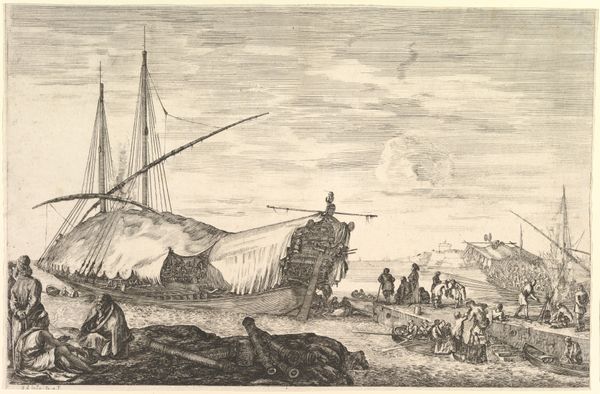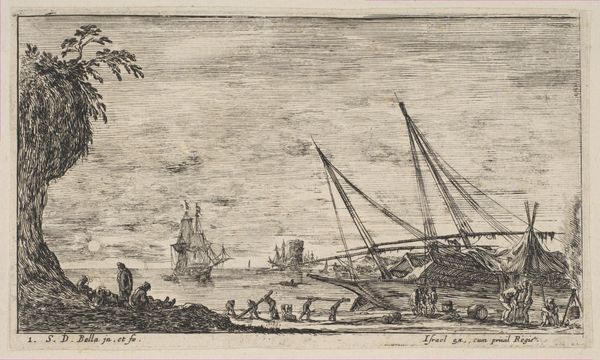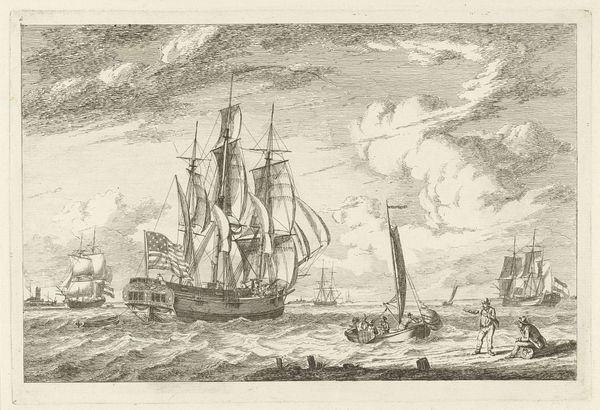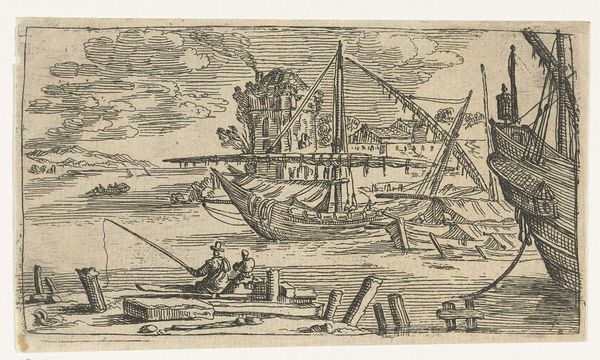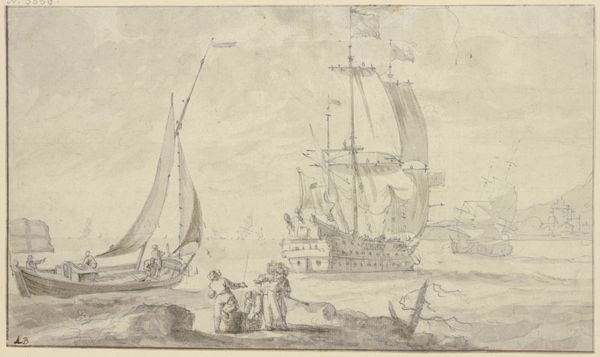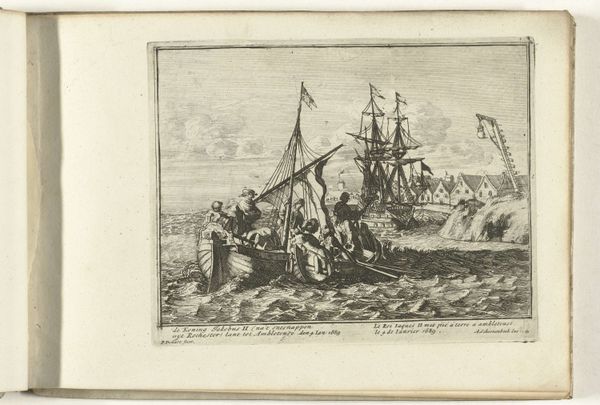
print, etching
#
baroque
# print
#
etching
#
landscape
#
cityscape
Dimensions: height 239 mm, width 161 mm
Copyright: Rijks Museum: Open Domain
Curator: This is a print called "Vuurbok met sfinx" by Jean Cotelle the First, created between 1669 and 1693. It showcases an etched cityscape. Editor: The scene feels remarkably serene. The density of the architectural forms on the left contrasts beautifully with the airy openness of the water and sky to the right. The layering and texture created with just line work is stunning. Curator: Yes, Cotelle uses the etching technique quite effectively here, doesn't he? The detail in the architecture reflects the rising urban landscape. In the context of the Baroque period, which emphasized grandeur and elaborate ornamentation, this more modest depiction of a bustling harbor offers insight into the realities of daily life for maritime communities at the time. Editor: Looking closely, it is interesting how the lines converge, particularly around the boats and the figures near the structure on the bank. This leads the eye directly into the composition and across to the ship. What can you tell me about its size and positioning? Curator: Well, maritime activity was central to the economic and political power of many European cities. A print like this would speak to a sense of progress, with an ordered environment as the background for the advancement of society. Editor: I appreciate how Cotelle managed to use these fine lines to construct light and depth, generating the tonal range in this two-dimensional work. And I'm interested in the formal aspect of how the clouds mirror the shapes in the rippling water. Curator: Yes, his masterful printmaking allows for widespread distribution of the images and ideas. This creates accessibility for middle-class audiences. Editor: Overall, the dynamism implied within the textures and gradations captures movement in the port even without the presence of bright color, while that simple construction acts as an anchor within the visual complexities. I enjoyed observing this print, seeing past the architectural elements to consider the composition of line work. Curator: Me too. It's enlightening to reflect on how historical prints, like this one, served as critical visual documents shaping perceptions of our changing world.
Comments
No comments
Be the first to comment and join the conversation on the ultimate creative platform.
